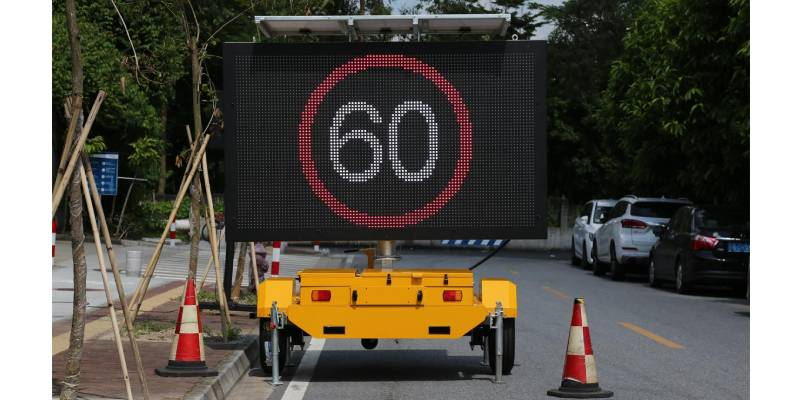VMS Traffic Signs: Enhancing Safety and Efficiency on the Road
are electronic signs installed on highways and roads that display messages to motorists. They are typically used to inform drivers of traffic conditions, accidents, road closures, weather conditions, and other essential information. Unlike traditional traffic signs that display static messages, VMS Traffic Signs can be programmed to display dynamic messages that can change based on real-time traffic conditions.
Benifits
Improved Safety: VMS Traffic Signs enhance safety on the road by providing drivers with real-time information about traffic conditions, accidents, and other hazards. By knowing what lies ahead, drivers can adjust their driving speed, route, or behavior accordingly, which reduces the likelihood of accidents and congestion.
Increased Efficiency: VMS Traffic Signs increase the efficiency of traffic flow by providing drivers with alternative routes and information about congestion ahead. Drivers can take alternative routes or exit the highway to avoid congestion, which reduces travel time and fuel consumption.
Cost-Effective: VMS Traffic Signs are cost-effective compared to traditional traffic signs that require frequent maintenance and replacement. They are also versatile and can display a wide range of messages, reducing the need for multiple signs.
Environmentally Friendly: VMS Traffic Signs are environmentally friendly since they consume less energy than traditional traffic signs. They also reduce carbon emissions by reducing congestion and idling.
Types
There are two types of VMS Traffic Signs: Portable and Fixed.
Portable VMS Traffic Signs are used for temporary traffic control, such as roadwork, special events, or accidents. They are mounted on trailers and can be easily moved from one location to another. Portable VMS Traffic Signs are usually powered by batteries or solar panels and are designed to be low maintenance and durable.
Fixed VMS Traffic Signs, on the other hand, are permanently installed on highways and roads. They are typically placed on gantries, cantilevers, or other overhead structures and are used for long-term traffic management. Fixed VMS Traffic Signs are powered by the grid and require regular maintenance to ensure optimal performance.
Applications
VMS Traffic Signs have numerous applications in traffic management and control. Some of the most common applications include:
Incident Management: VMS Traffic Signs are used to inform motorists of accidents, road closures, and other incidents that may affect traffic flow. They can also be used to provide directions to alternate routes or detours.
Traffic Control: VMS Traffic Signs are used to manage traffic flow during peak hours, special events, or emergencies. They can be programmed to display messages that encourage drivers to take alternate routes or exit the highway.
Speed Control: VMS Traffic Signs are used to inform motorists of speed limits and to discourage speeding. They can also be used to display messages that inform drivers of upcoming speed cameras or police checkpoints.
Weather Conditions: VMS Traffic Signs are used to inform motorists of weather conditions, such as fog, rain, or snow. They can also be used to provide warnings of hazardous weather conditions, such as ice or high winds.








Leave a comment